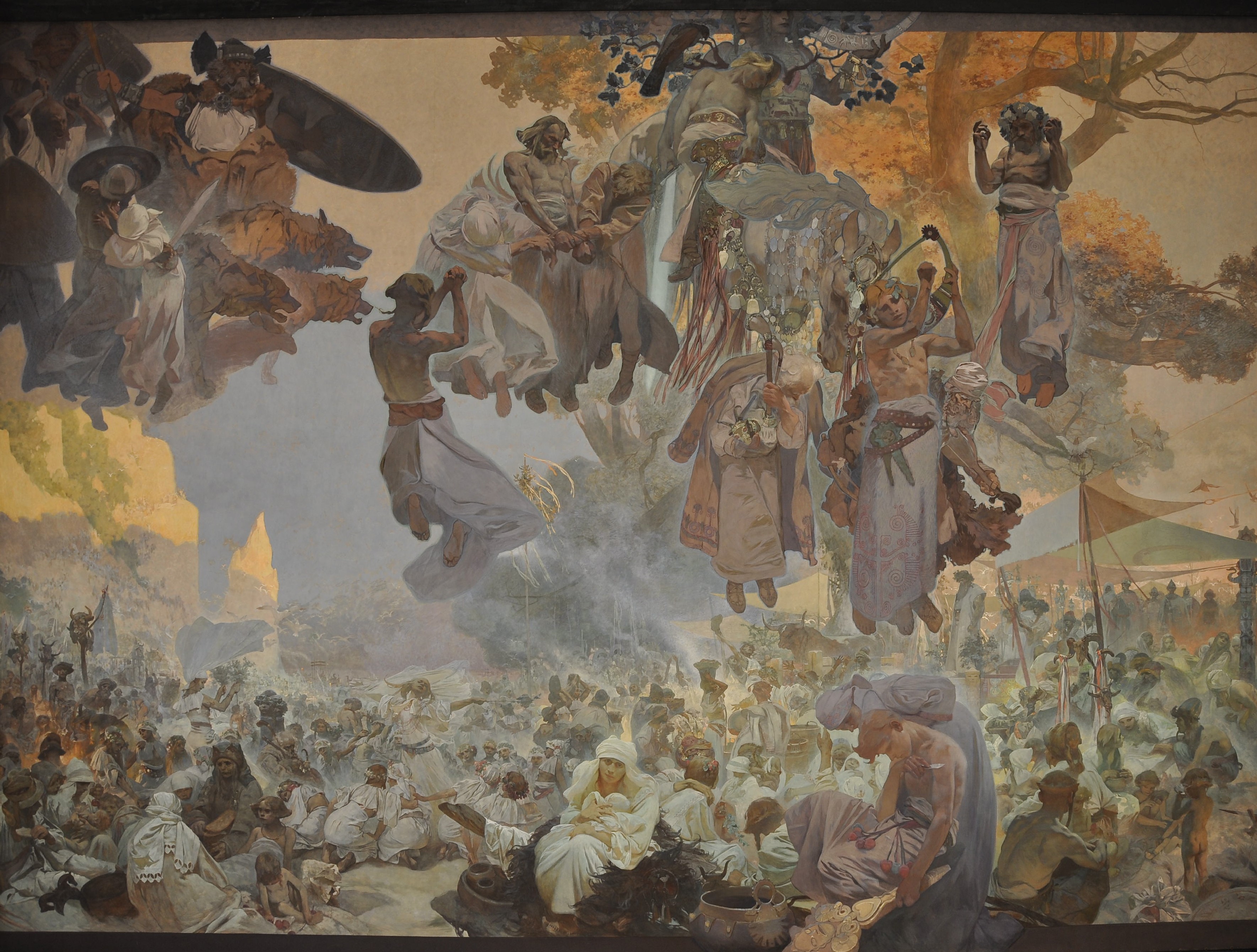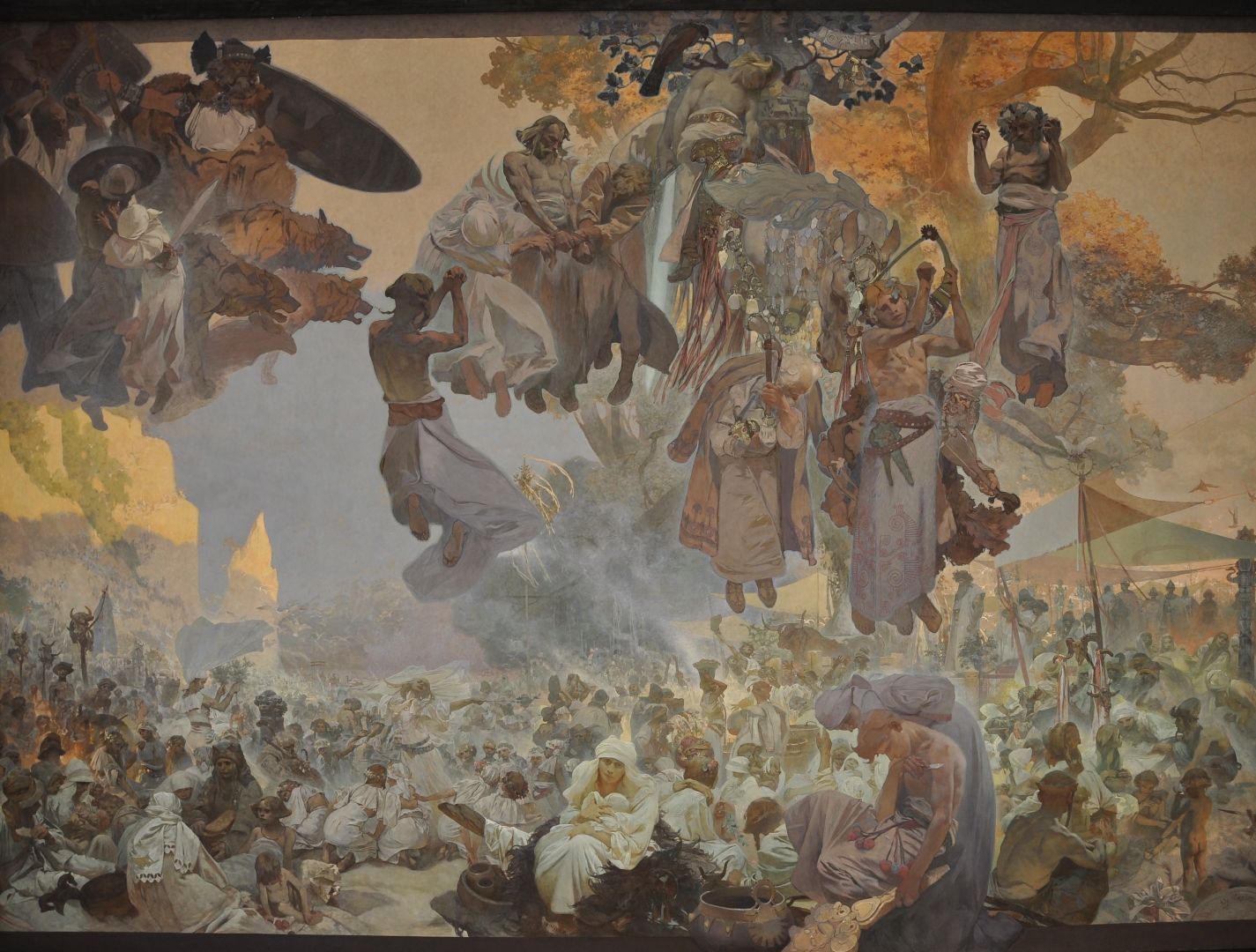THE CELEBRATION OF SVANTOVIT ON RÜGEN
The Slavs could no longer make a living in the overcrowded region, so they set out in search of a new homeland. This era of tumultuous changes is known as the Migration Period. As early as the 7th century, some tribes settled along the coast of the Baltic, which was back then called the Slavic Sea. The Slavic immigrants assimilated the remnants of the Celtic and Germanic populations in the area.
A large island with many lakes lies near the Odra estuary to the Baltic Sea. It's called Rügen, and it was the home of the Rani tribe for centuries. At the northernmost tip of the island, protected by ramparts and steep chalk cliffs, was the capital of Arkona and the temple of the god Svantovit.
This painting shows the autumn festival celebrating the aforementioned god. The priests thank the deity for the rich harvest and prophesy the future. In that regard, Arkona's significance for Slavs is comparable to Delphi for the ancient Greeks. On the right, a procession led by the high priest emerges from the temple. At the head of the crowd, he drives a bull, a symbol of strength, to be sacrificed. It's a sunny afternoon; people rejoice, sing and dance, and only a mother with a child on her lap - situated at the centre in the bottom part of the scene - is gloomy, perhaps predicting how unhappy the future of the Rani tribe will be.
During the Crusades against the Baltic Slavs in 1168, the Danes, led by Valdemar of Denmark, managed to conquer the Arkona, demolish the temple and burn down the statue of Svantovit. This event is symbolically depicted at the top of the image. On the left, Wödan, the Germanic god of war, holds a shield, and a pack of sacred wolves surrounds him. The last Slavic warrior dies on a sacred white horse in the top centre. Svantovit takes the sword from man's hand to fight for his worshippers. A group of chained people symbolises the Slavic peoples conquered by the Germans. The figures of the bards remind us that we know about the Baltic Slavs only from chronicles, myths and legends.
At the bottom right, a young carver creates a new idol as a replacement for the destroyed statue of the god Svantovit. Mother and son were painted with darker colours, and they stand out vividly from the two-dimensional environment. This pair symbolises the twilight and the eventual demise of the Baltic Slavs.

